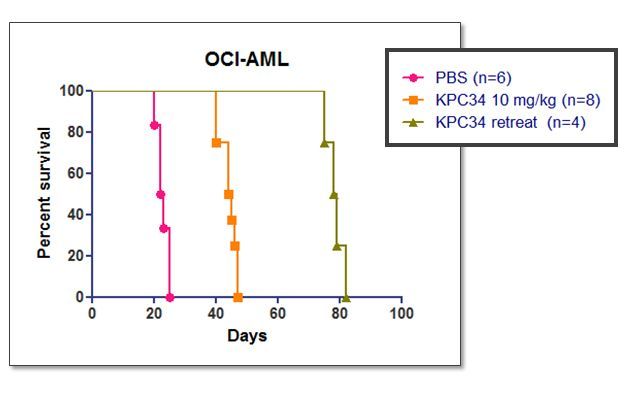AML & ALL.
KPC-34
Developed at Wake Forest School of Medicine for the treatment of acute myeloid leukemia (AML) and acute lymphoblastic leukemia (ALL).
Background
70% of All AML patients are over the age of 60 and only 6.6% of patients are still alive 5 years after diagnosis. Gemcitabine and Cytarabine are the backbone of AML and ALL therapy, but life expectancy is poor and relapses are much harder to treat.
Cytarabine (Ara-C) has been a major drug for acute myeloid leukemia (AML) treatment for more than three decades. But KPC34 has shown superior results when tested against Cytarabine.
KPC34 is superior to Cytarabine
Median Survival
| PBS | 23 |
| Ara-C | 25 |
| KPC34 | 44.5 |
p=0.0007****
KPC34, when combined with Doxorubicin, has shown better results than Ara-C
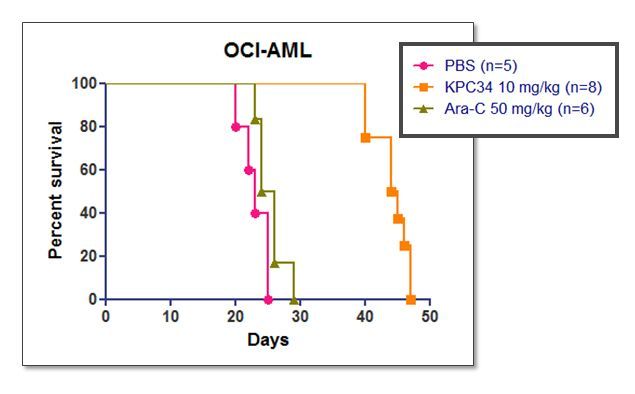
KPC34 + Dox is More Effective than Ara-C + Dox in Treatment of Naïve ALL In Vivo
Median Survival
| PBS | 14.5 |
| Ara-C + Dox | 30.5 |
| KPC34 + Dox | 50.5 |
Log-rank test p < 0.0001****
KPC34 has also shown superior results when tested against Gemcitabine
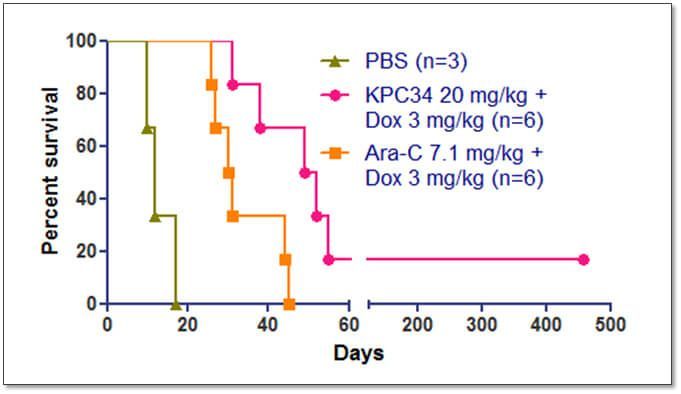
KPC34 is superior to Gemcitabine
In preclinical data, KPC has also shown to be active against human ALL
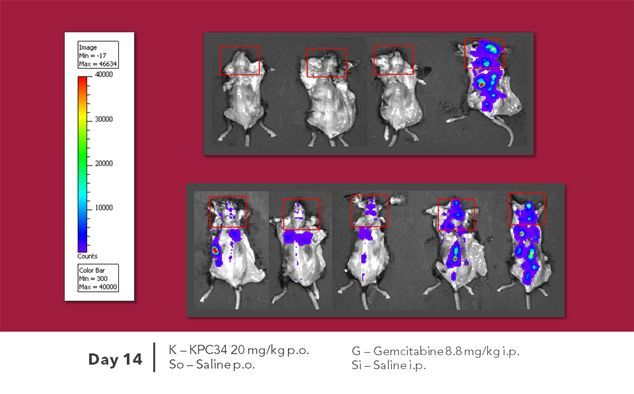
KPC34 is active against human ALL
KPC34 has also shown superior results in treating mice after a relapse
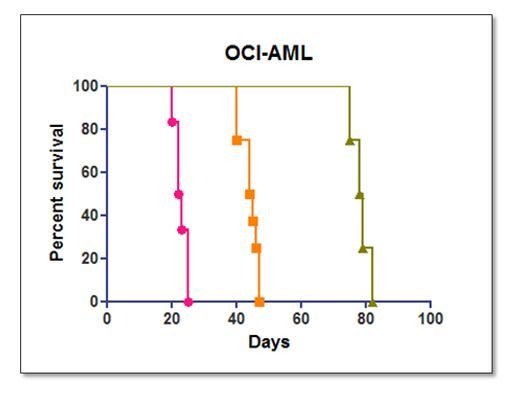
Retreating mice with KPC34 after relapse
KPC34 has also shown superior results in treating mice after a relapse
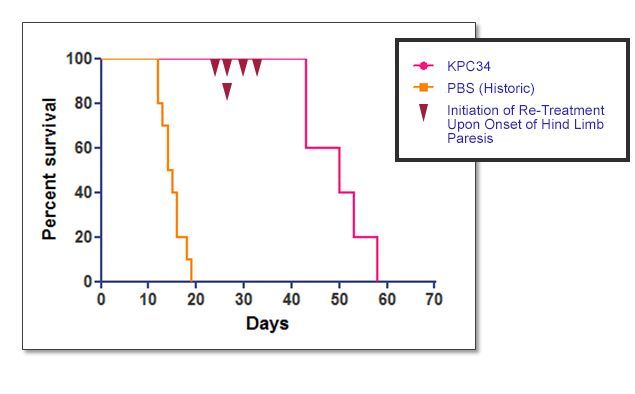
Repeat dosing improves survival
Median Survival
| PBS | 22.5 |
| KPC34 | 44.5 |
| KPC34 re-treat | 78.5 |
p=0.0001****
KPC34 Vs. re-treat=0.0028**
